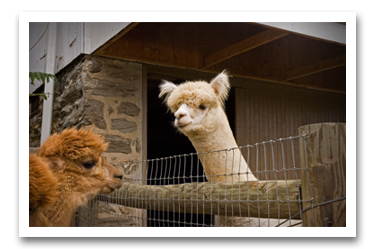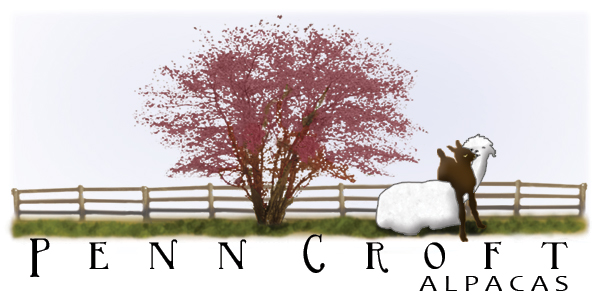Everything Alpaca:
Random Alpaca Facts

Alpacas are gentle, curious animals, imported to the United States beginning in the 1980s. Today there are over 100,000 alpacas living here. Most alpacas - over 90% - continue to live in the Andes Mountains in South America, where they are a native species.

Alpacas are members of the Camelid family, which also includes camels, llamas, vicuñas, and guanacos.

Alpacas are gentle on a pasture for two specific reasons — their toes and their teeth. Alpacas don’t have hooves; they have a pad and two toenails. They also cut the grass with the teeth on the bottom row of their mouth and a gummy plate on the top of their mouth. Unlike other ruminants, they do not pull the grass by the roots, but use their teeth and plate to cut the grass.

Alpacas grow beautiful fiber which is made into soft mittens, scarves, sweaters, blankets, and coats. Their fiber comes in sixteen official colors according to the Alpaca Registry Inc., and those colors are white, beige, light fawn, medium fawn, dark fawn, light brown, medium brown, dark brown, bay black, true black, light silver grey, medium silver grey, dark silver grey, light rose grey, medium rose grey, and dark rose grey. They are sheared once a year in the late spring.

Alpaca poop is called "beans" (due to its appearance) and it is a wonderful fertilizer for your flower garden. They leave their "beans" in a common location so it is easy to clean the pasture.

Alpacas skip, or "pronk", in a frisky way. It’s fun to watch, and they clearly are enjoying themselves.

Fiber
Every year we have our alpacas sheared in May with a variety of helpful volunteers led by the amazing shearer, Jamie Jones. It is always an exhausting, but a fun and productive day because we have beautiful bags of fiber at the end of the event. After our shearing day we skirt the fiber preparing it for production.
Last summer we had our fourth batch of fiber processed. We currently have many skeins of yarn in multiple weights in natural and dyed colors. We also have blends of colors in our yarn and bumps for making rugs.
We wait three or four years to process our fiber, so we have enough raw material by each alpaca, so your yarn is more consistent making it incredibly soft. Our yarn label shows you the alpaca the fiber comes from. Contact us if you are interested in lovely yarn from our alpacas.


Top Eight Reasons to Own Alpacas
- Every morning you get to greet beautiful faces who are thrilled to see you.
- Evenings sitting in the pasture are the best stress reliever as you watch the adults graze on the grass and the crias play with each other.
- Watching a birth and seeing the first gulp of air are wonderful events for anyone fortunate enough to experience it.
- The excitement to see your fiber return as beautiful yarn
- Preparing and competing in an alpaca show to see how you compare in the field
- Meeting interesting, kind, and thoughtful people in the alpaca industry and the many people who stop by our farm to experience the alpacas
- Quality alpacas are a solid investment in a risky, financial time.
- Spending more time raising alpacas with your family and creating a farm you love together is rewarding.

There are two types of alpacas: huacaya and suri. A huacaya is easily identified by the fluffy fiber and a suri is identified by the long, silky dreadlocks. Both types of fiber are used for making beautiful products.

Alpacas are very social animals, and live in herds. It is therefore unhealthy for them to live alone.
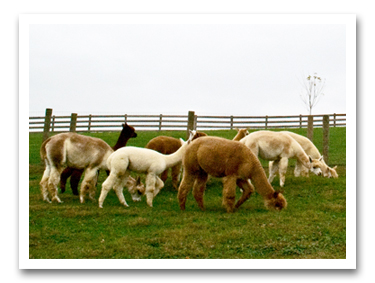
Alpacas usually weigh between 120 and 200 pounds, and the average lifespan of an alpacas is 20 years.

Alpaca farmers breed for correct conformation (body proportions) and for the best possible fleece. Alpacas’ fleece is judged for a number of features including: the density (thickness), fineness (how thin each fiber is based on a micron count and a low count like 17 is better than a high count like 28), crimp (the curve of each fiber), handle (how the fleece feels), brightness (how it catches the light), and staple length (how long each fiber measures).
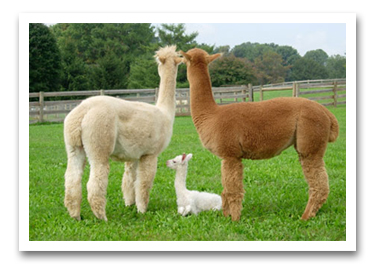
The cria above is named Areva. Click here to read her story.
Baby alpacas are called crias. They’re so much fun, and the joy of new life is such an important time on a farm. Mothers are so proud of their new crias as they explore the barn and the pastures. It is fun to watch them walk, then run through the fields, and explore their new world. Alpaca females have an eleven-month gestation period and they have one cria at a time. The crias will nurse for around six months before they are weaned.

Alpacas eat grass (specifically orchard grass) then chew their cud, and the grass goes through a multiple-chamber stomach.

Alpacas make two distinct sounds. They hum when they are slightly stressed and one animal will call an alarm if he or she feels the group is being threatened. They also spit, and make a honking noise when they’re annoyed.
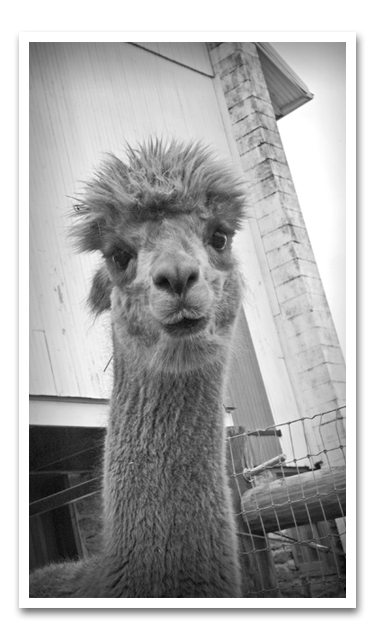
Due to their thick coats, they prefer the cooler weather. On a hot day you will usually find them in the barn in front of the fans. In the winter they enjoy romping in the snow.

Alpaca Shows
Pennsylvania Alpacas Owners and Breeders Association (PAOBA) Shows
We had gone to a number of alpacas shows over the last few years never sure we were interested in participating. It is great fun to go look at different alpacas at the shows. The shows are great ways to meet others also interested in these wonderful creatures so we’ve enjoyed attending. However, this winter we had yearlings who were eligible for shows so we decided to give it a try. We also were excited to find out how some of our first crew compared to other yearlings.
It was a busy, but very exciting time as we got ready for the show. We decided to get there early because we had friends that suggested it and we were glad we did. Early in the day there was so much more room for the inexperienced farmer to figure out the best set up. We were glad we were able to rearrange our pens without providing entertainment for the experienced farmers.
We were fortunate enough to have a close show so that family could visit and could surprise us with their support which was fun. Our two animals did well so we had a fabulous first experience.
